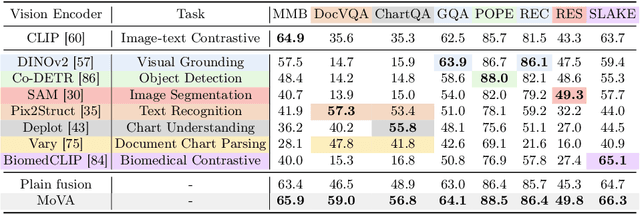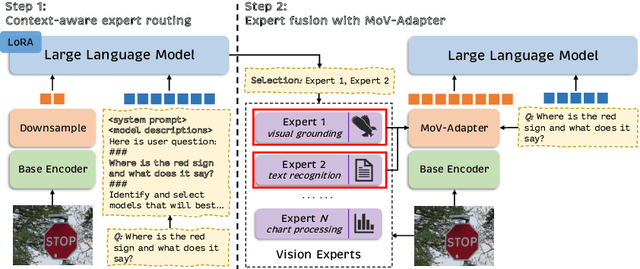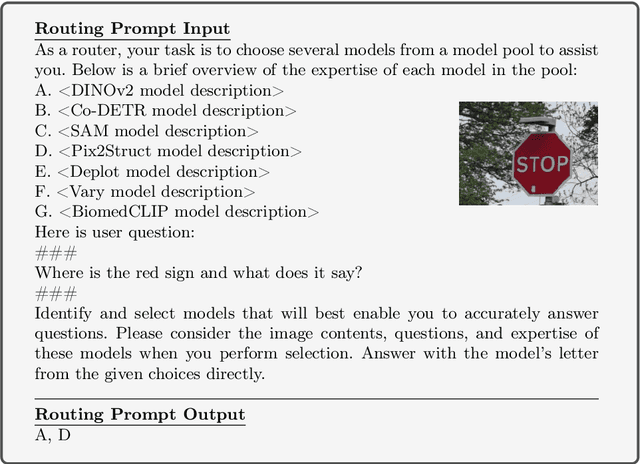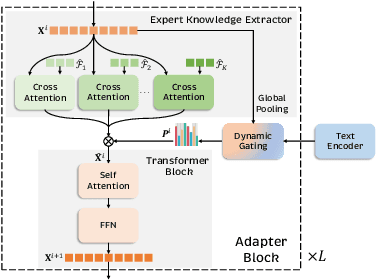MoVA: Adapting Mixture of Vision Experts to Multimodal Context
Paper and Code
Apr 19, 2024



As the key component in multimodal large language models (MLLMs), the ability of the visual encoder greatly affects MLLM's understanding on diverse image content. Although some large-scale pretrained vision encoders such as vision encoders in CLIP and DINOv2 have brought promising performance, we found that there is still no single vision encoder that can dominate various image content understanding, e.g., the CLIP vision encoder leads to outstanding results on general image understanding but poor performance on document or chart content. To alleviate the bias of CLIP vision encoder, we first delve into the inherent behavior of different pre-trained vision encoders and then propose the MoVA, a powerful and novel MLLM, adaptively routing and fusing task-specific vision experts with a coarse-to-fine mechanism. In the coarse-grained stage, we design a context-aware expert routing strategy to dynamically select the most suitable vision experts according to the user instruction, input image, and expertise of vision experts. This benefits from the powerful model function understanding ability of the large language model (LLM) equipped with expert-routing low-rank adaptation (LoRA). In the fine-grained stage, we elaborately conduct the mixture-of-vision-expert adapter (MoV-Adapter) to extract and fuse task-specific knowledge from various experts. This coarse-to-fine paradigm effectively leverages representations from experts based on multimodal context and model expertise, further enhancing the generalization ability. We conduct extensive experiments to evaluate the effectiveness of the proposed approach. Without any bells and whistles, MoVA can achieve significant performance gains over current state-of-the-art methods in a wide range of challenging multimodal benchmarks. Codes and models will be available at https://github.com/TempleX98/MoVA.
 Add to Chrome
Add to Chrome Add to Firefox
Add to Firefox Add to Edge
Add to Edge